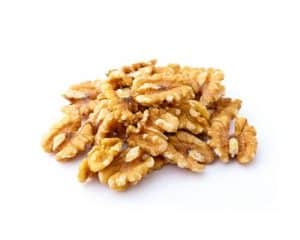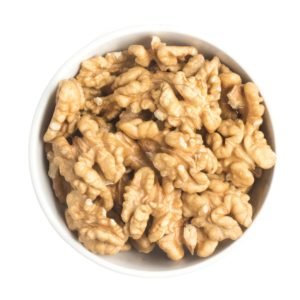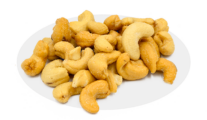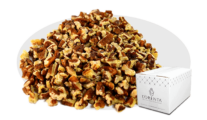Written By Sam Henselijn
A Guide to Walnuts. Walnuts are a tree nut and grow on a Walnut tree. The edible flesh is contained in a hard shell. You need to first remove this hard shell to get to the meaty nut inside. In this guide to Walnuts, we tell you where walnuts are from, how they are grown, and ways to toast them.
Where are walnuts from?
Several hypotheses have emerged on the origin of walnuts. One

theory states that the walnut tree originally grew in certain Asian regions. Thereafter, they spread to Europe. The Romans started the cultivation of Walnut trees and introduced it to Germany and later Spain. The Spanish brought the walnut tree to America while exploring the New World. The black walnut is native to North America while the English walnut species is popular in Europe and middle east. English walnuts originate from the Middle East and are sometimes called Persian walnuts. These have a softer shell with a mild flavor. Black walnuts are predominant in the eastern United States. They have a stronger flavor and are darker.
How are walnuts grown?
Walnut trees grow well in sunny and sheltered locations. They do well in drained clay/loamy soils at an altitude of between 900 and 3000 meters above sea level. Rain is important throughout the year for optimal growth and yield. Walnuts may not do well in summer or frosty conditions.
Temperatures should not exceed 38 degrees Celsius to avoid

shriveled kernels. The soil PH should be near neutral. Before planting make sure your land is prepared well by clearing any vegetation. Plow about 3 or 4 times until the soil has a fine tilth. Walnut trees are mainly propagated through seeds. The walnut tree requires pruning in early spring. Thinning is necessary in case of highly dense branches. Mulching helps with moisture retention and weed control. Walnut trees take up to 12 years to mature. Grafted plants can bear fruits in about 5 years. A mature walnut tree can yield up to 150 kg nuts with proper farm management and the right variety. On average, you can expect about 50 kg.
A Guide to Walnuts
Health benefits of walnuts
Walnuts are a popular snack with various health benefits.
- They are rich in beneficial fats that improves brain function
- Walnuts are rich in vitamin E which is good for our memory
- They boost our moods
- Walnuts reduce the risk of heart diseases
- They promote weight loss. This could be the reason walnuts are a good snack for people seeking to lose weight.
How to toast walnuts
You can either toast walnuts on the stove or in the oven. If you decide to use a stove:
- Toss your walnuts in a skillet:
- Add oil and salt to your desire
- Heat the walnuts over medium heat. Stir for about 5 minutes until they turn brown.
- Remove your toasted walnuts from the skillet. You may desire to use them according to your desire.
- You can store the toasted walnuts in an airtight container for up to 7 days
If you are using an oven:
- Preheat the oven to 350 degrees.
- Line baking tray with either parchment paper
- Add oil and salt to your desire and toast for about 10 minutes until they turn brown
- Remove your walnuts from the oven and.
Are black walnuts edible?
They have a sweet taste, especially when used in ice-cream desserts. You may also decide to dip black walnuts in sugar syrup and eat like candy. Yes, they are edible.
Are walnuts tree nuts?
Walnuts are an example of tree nuts. They belong to the same family as cashew nuts and almonds.
They are a healthy snack rich in fiber, fats and protein. This guide to walnuts offers valuable information on the origin of the walnut tree. It also explores the growing conditions, types, and health benefits of walnuts. The guide further offers useful directions on how to toast walnuts.
FAQ about Walnuts
Sam Henselijn Author’s Biography – Meet L’Orenta Nuts CEO
Copyright 2024 L’Orenta Nuts
L’Orenta Nuts proudly holds the SQF food safety certification, symbolizing our unwavering dedication to upholding the highest standards of food safety and quality. This certification guarantees that our products undergo rigorous scrutiny, ensuring transparency, traceability, and adherence to global food safety regulations for the utmost consumer confidence.
L’Orenta Nuts has the HACCP (Hazard Analysis and Critical Control Points) certification is a systematic approach to identifying, evaluating, and controlling food safety hazards. It ensures that food products are produced and handled in a manner that minimizes risks and complies with safety standards.
Our GMP (Good Manufacturing Practices) certification ensures that a manufacturing facility adheres to comprehensive quality and safety standards while producing pharmaceuticals, food, and other consumer goods, promoting consistency, quality, and compliance with regulatory requirements.
L’Orenta is an FDA-approved manufacturing facility and has met the rigorous standards set by the U.S. Food and Drug Administration. It demonstrates compliance with regulations, ensuring the production of safe and high-quality food products.
How are walnuts grown?
Walnut trees thrive in sunny and sheltered locations, preferring well-drained clay/loamy soils. They are sensitive to extreme temperatures and require regular rainfall for optimal growth. Walnut trees can take up to 12 years to mature, with grafted plants bearing fruit in about 5 years.
Where do walnuts originate from?
Walnuts are believed to have originated in Asia and were later spread to Europe by the Romans. The Spanish explorers brought the walnut tree to America. There are two main types of walnuts: the black walnut, native to North America, and the English walnut, which originates from the Middle East and is sometimes called Persian walnut.
Are black walnuts edible?
Yes, black walnuts are edible and have a sweet taste, making them suitable for use in ice cream desserts or coated in sugar syrup as candy.
























